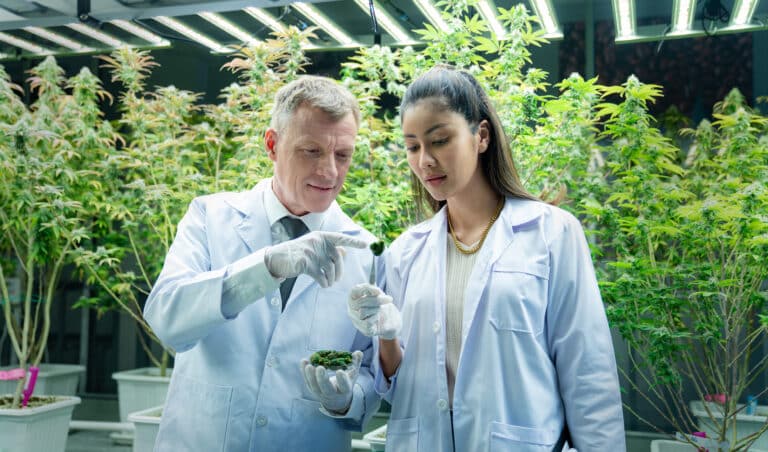Understanding dual diagnosis
As you navigate treatment options, selecting the right therapy for dual diagnosis is critical to address both your mental health condition and substance use disorder concurrently. An integrated approach ensures you receive comprehensive care from the outset, spanning detox, dual diagnosis residential treatment, and outpatient dual diagnosis treatment designed around your unique needs. Based on our analysis, programs that combine therapeutic modalities and clinical support deliver the best outcomes for lasting recovery.
Understanding dual diagnosis
Definition and prevalence
Dual diagnosis, also known as co-occurring disorders, refers to the simultaneous presence of a mental health disorder and a substance use disorder. In the U.S., about 20.4 million adults experience this combination of conditions [1]. Furthermore, out of the 21 million people with a substance use disorder, 8 million also live with a mental illness, highlighting how common dual diagnosis truly is [2].
Common co-occurring conditions
You may encounter various pairings of disorders, including:
- Major depressive disorder and alcohol use disorder
- Anxiety disorders and opioid misuse
- Bipolar disorder coupled with stimulant dependence
- Post-traumatic stress disorder (PTSD) alongside prescription drug abuse
According to the Substance Abuse and Mental Health Services Administration, the most frequently observed mental health conditions in dual diagnoses are depression, anxiety, bipolar disorder, and PTSD [3].
Emphasizing integrated care
Why address both conditions simultaneously
An integrated treatment model ensures that neither your mental health nor your substance use is treated in isolation. Research indicates that when both disorders are considered primary and receive concurrent intervention, clients achieve superior clinical outcomes and reduced relapse rates [2].
Benefits of combined programs
- Improved symptom management for both disorders
- Streamlined coordination among psychiatrists, therapists, and medical staff
- Enhanced treatment engagement and retention
- Greater cost-effectiveness compared to siloed services
Based on our experience, you are more likely to sustain progress when care plans integrate psychosocial interventions, pharmacotherapy, and peer support in a unified framework.
Exploring therapy options
Below is an overview of core therapeutic modalities you may encounter.
| Therapy modality | Focus | Setting |
|---|---|---|
| Cognitive-behavioral therapy (CBT) | Identifying and modifying unhelpful thought patterns | Individual |
| Dialectical behavior therapy (DBT) | Emotion regulation, distress tolerance, interpersonal effectiveness | Group/Individual |
| Motivational enhancement therapy (MET) | Strengthening motivation and commitment to change | Individual |
| Integrated group therapy (IGT) | Addressing substance use and mood symptoms together | Group |
| Family therapy and support networks | Improving communication, rebuilding trust | Family |
| Medication-assisted treatment (MAT) | Combining approved medications with counseling | Clinical |
Cognitive-behavioral therapy (CBT)
CBT helps you recognize negative thought patterns that fuel both mental health symptoms and substance misuse. Through structured sessions—often delivered as individual therapy for addiction—you develop coping skills to challenge distorted beliefs and manage triggers effectively.
Dialectical behavior therapy (DBT)
DBT emphasizes emotion regulation and interpersonal effectiveness. In both individual and group therapy for substance abuse formats, you learn mindfulness techniques and distress-tolerance strategies to navigate intense feelings without resorting to substance use.
Motivational enhancement therapy (MET)
MET focuses on enhancing your intrinsic motivation to change. Based on motivational interviewing principles, this approach is typically delivered in individual sessions, helping you resolve ambivalence and commit to recovery goals.
Integrated group therapy (IGT)
IGT merges addiction treatment with mood disorder management. In a supportive group setting, you learn relapse-prevention skills while addressing depressive or manic symptoms, fostering both peer support and clinical guidance [4].
Family therapy and support networks
Engaging loved ones in family therapy can repair relationships and establish a supportive home environment. In addition, dual-focused support groups—such as Double Trouble in Recovery or Smart Recovery—reduce isolation and share coping strategies [2].
Medication-assisted treatment (MAT)
When applicable, medication-assisted programs combine FDA-approved medications with counseling. For opioid use disorder, you may participate in a suboxone treatment program or attend a suboxone outpatient clinic, which stabilize withdrawal symptoms and reduce cravings.
Reviewing treatment levels
Detox programs
A medically supervised detox is often your first step. Options include:
- alcohol detox program
- opioid detox center
- fentanyl detox treatment
- heroin detox program
- cocaine detox center
- meth detox program
- marijuana detox center
- adderall detox program
- ecstasy detox treatment
Medical supervision manages withdrawal discomfort while initiating mental health stabilization.
Residential programs
In a structured residential setting, you receive 24/7 clinical care, therapy, and peer support. Our offerings include:
- residential alcohol rehab
- residential drug rehab
- dual diagnosis residential treatment
- holistic addiction treatment program
This immersive environment fosters deep therapeutic engagement and skill building.
Outpatient services
Outpatient care affords flexibility while maintaining clinical intensity. Options encompass:
- partial hospitalization program for addiction
- intensive outpatient program for addiction
- outpatient alcohol rehab
- outpatient drug rehab
- outpatient dual diagnosis treatment
These programs allow you to apply new strategies in real-world settings under ongoing professional guidance.
Choosing your path
Assessing needs and severity
Start by evaluating the severity of your symptoms and the level of support required. A comprehensive assessment—covering psychiatric history, substance use patterns, and social factors—guides the selection of the most appropriate level of care.
Collaborating with the care team
You benefit when psychiatrists, therapists, medical providers, and case managers coordinate seamlessly. Inquire about addiction counseling services and integrated treatment plans that combine pharmacotherapy with psychosocial interventions.
Planning for aftercare and prevention
Sustainable recovery extends beyond formal treatment. We recommend you develop a robust aftercare strategy, incorporating aftercare planning for addiction and relapse prevention therapy to anticipate challenges and maintain progress.
Supporting recovery strategies
Peer support and community groups
Long-term recovery thrives on connection. Regular participation in groups like Alcoholics Anonymous, Narcotics Anonymous, Double Trouble in Recovery, or Smart Recovery offers accountability and shared experience [2].
Engaging family and loved ones
Continued family involvement reinforces healthy dynamics and provides emotional support. Family therapy sessions can equip your loved ones with communication tools and coping strategies.
Ongoing monitoring and wellness
Recovery is a dynamic process. Routine check-ins with your care team, psychiatric medication management, and engagement in wellness activities—such as exercise, mindfulness, and community integration—promote resilience and reduce risk of relapse.
Choosing the right therapy for dual diagnosis is a pivotal step toward reclaiming your life. At The Hope House, our evidence-based, integrated model ensures you receive the specialized care you need at every stage—from detox to residential programs and flexible outpatient support. Contact us today to begin a personalized recovery plan that addresses both your mental health and addiction with equal rigor and compassion.







